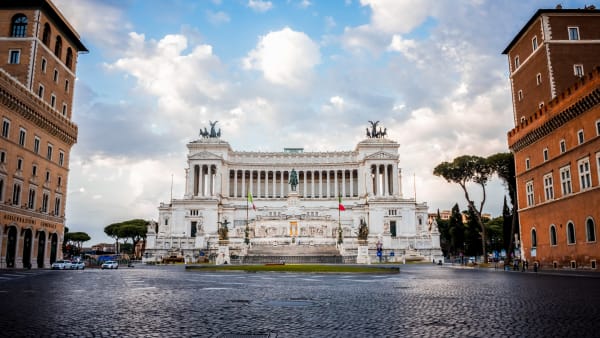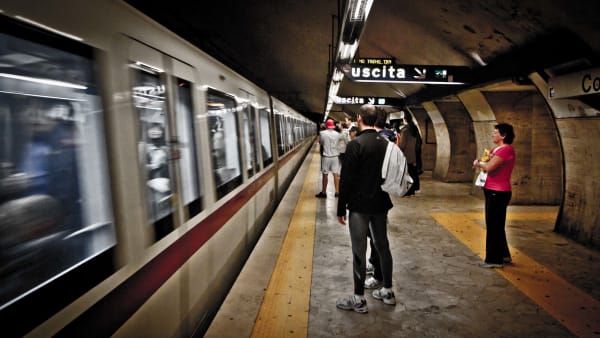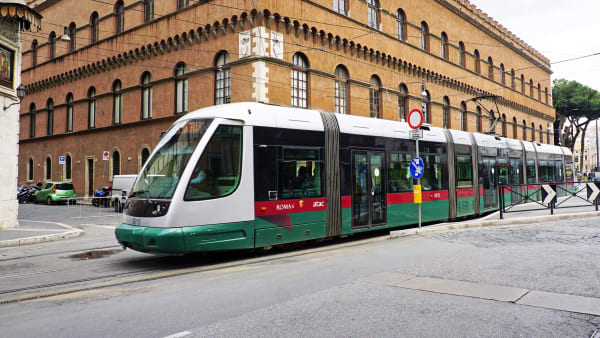Curiosities
Curiosities
The Domus Aurea is considered one of the most extravagant works in ancient Rome’s history of art and architecture. The remains are enough to give you an idea of the magnificence of the palace.
Artists and architects
In ancient times it wasn’t common to sign works and, as a result, the names of many artists have been lost. The Domus Aurea is an exception to this rule. The painter of the many extraordinary paintings on the ceilings and walls of the Domus Aurea was named Fabullus. About 30,000 square feet of his art can still be seen today and some of his works have been restored.
The pictorial themes were mainly mythological scenes, still lifes, landscapes, and grotesques. In addition, wall decorations with marble panels and gold leaf can be admired.
Unlike many ancient buildings, we even know the names of Nero’s Golden House architects: Celere and Severo. They designed at least two of the main dining rooms under Nero’s supervision.
Rumors and stories about Nero
Since Nero began building his palace after the Great Fire in 64 AD, rumors circulated that he had started the fire to create more space. However, recent research by historians and archaeologists shows that this isn’t true.
Moreover, Nero made sure that Rome was rebuilt and in better condition than before the fire. It’s said that he had used the funds of the provinces for this purpose and had invested the money not only in urban renewal but mostly in his new palace. On the contrary, other historical sources report that the emperor proved to be a benefactor in the reconstruction of the city by opening his buildings to the homeless and reducing the price of grain.
The truth of all these stories about Nero is questionable, as they were all written at least 50 years after his death. The authors included Tacitus, Suetonius, and Cassius Dio, all from the senatorial class. They likely wanted to cast Nero in a bad light, and this slander’s impact is noticeable to this day.
Other historians, such as Lucanus, actually described Nero’s reign as a period of peace and prosperity. And Dio Chrysostomos even wrote after Nero’s death that the people wished he were still alive and would remain emperor forever.
A secret room in Nero’s palace
In May 2019, archaeologists accidentally discovered a new room of the Domus Aurea. It was located underground in a huge part of the building under the Colle Oppio, on the south side of the Esquiline hill.
Magnificent murals of the so-called Sphinx Hall show animals, gods, mythical creatures, and sword-wielding warriors. Since there have been repeated collapses in rooms of the palace in recent years, the hall has remained filled with earth for the time being to avoid endangering its stability. Parts of the park above the complex have now been removed to relieve the walls.
How Nero died
Nero dug his own grave by having senators prosecuted for lese majesty or (religious) conspiracies and, in some cases, ordered senators to commit suicide. Those who refused received confiscation of family assets or an undignified liquidation by soldiers.
As a result, the Senate declared him an enemy of the state and Nero fled. After all, enemies of the state were killed in a gruesome manner: their necks were clamped and their naked bodies were beaten to death with rods. He was aware that if he stayed, a humiliating and painful death awaited him.
Despite his attempt to escape death, he was backed into a corner. When he was arrested on June 9 in 68 AD, he decided (after hesitation) to put a dagger in his throat. His last words were “qualis artifex pereo” (what an artist dies in me). The stab was probably not lethal so Epaphroditus, an old slave who remained loyal to him until the end, eventually gave him the fatal stab.















